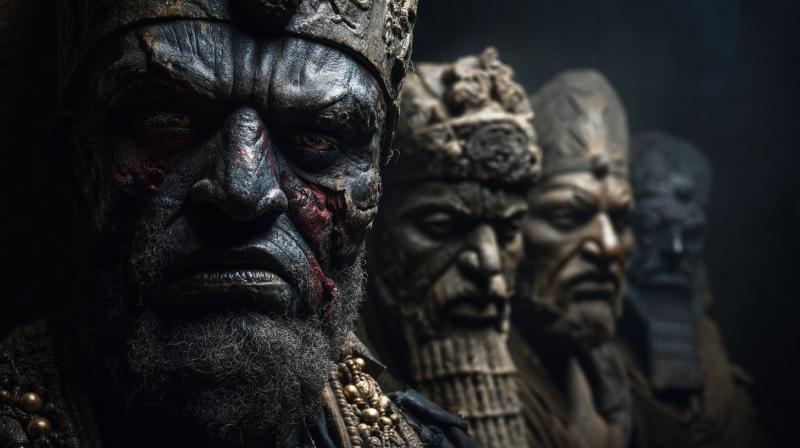Every great myth contains a moment where the hero, or sometimes the god, steps not only into danger but also into darkness. They descend, often unwillingly, into a world hidden beneath the surface of life itself: the underworld.
It is a place of death, but not only that. It is a land of shadows, of memories, and of forgotten truths. Whether it’s the Greek Hades, the Mesopotamian Kur, or the Mesoamerican Mictlan, the underworld is more than a destination—it is a crucible. Those who descend into the underworld rarely return unchanged.
And perhaps that’s the point.
This is a story about descent. But more than that, it’s a story about what descent teaches us—about change, loss, power, and becoming.
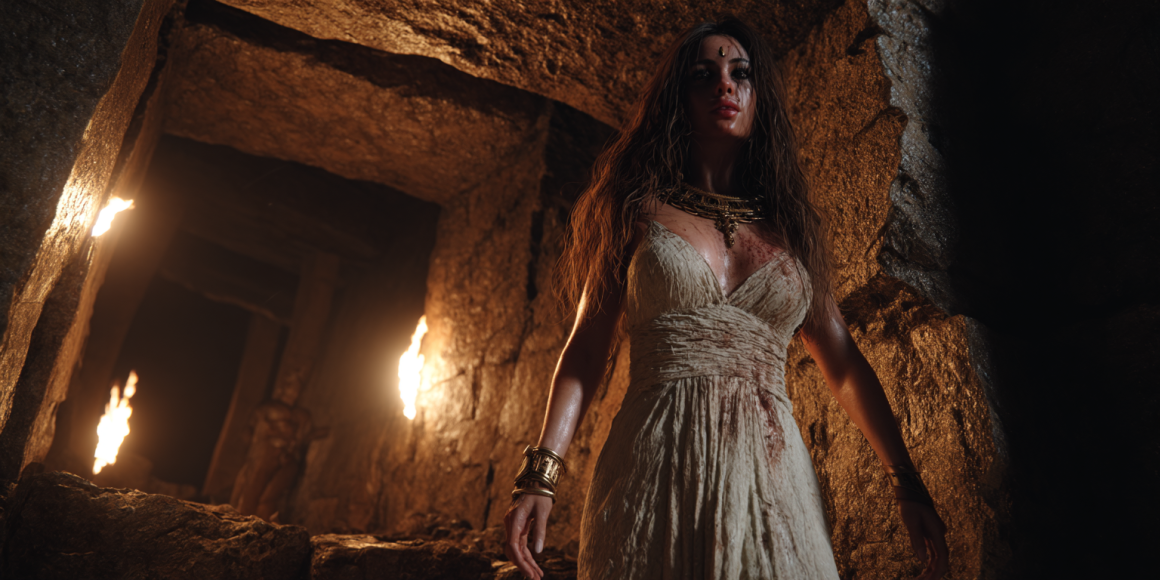
Inanna’s Descent: The First Gate
In the Sumerian myth of Inanna—goddess of love, fertility, and war—we find one of the oldest recorded descent myths. Inanna, Queen of Heaven, chooses to descend into the underworld ruled by her sister Ereshkigal. She announces her intent and prepares meticulously. She adorns herself in royal garments, symbols of her divine power: crown, necklace, breastplate, and robes. She tells her servant Ninshubur to seek help from the gods if she does not return.
She descends.
But the underworld has rules.
At each of the seven gates, Inanna is stripped of one item of power. Her crown. Her scepter. Her necklace. By the time she stands before Ereshkigal, she is naked and bowed low.
And then, she dies.
Her body hangs on a hook, left to rot. The Queen of Heaven is reduced to nothing.
But this is not the end.
Through the intervention of other gods, Inanna is reborn. She returns to the world above, transformed—not just restored, but changed. She has faced death. She has confronted her sister, her shadow, and come back wiser.
The descent is not a punishment. It is a rite.
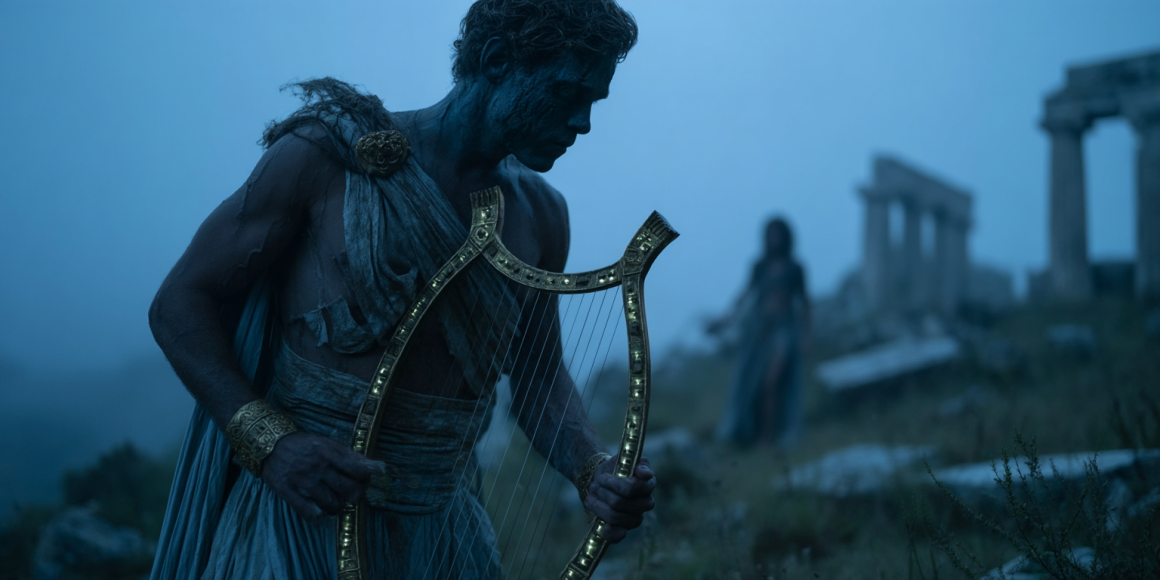
Orpheus: The Music of Mourning
In Greek mythology, Orpheus was the greatest musician who ever lived. His melodies had the power to subdue untamed creatures and stir even the stones to tears. When his beloved Eurydice died, he descended into Hades itself to bring her back.
Armed not with sword but with song, he crossed the river Styx, passed Cerberus, and stood before the rulers of the dead. He played his lyre, and the music spoke of love, loss, and longing. Persephone and Hades wept—and agreed to let Eurydice return.
But there was one condition: Orpheus must not look back at her until they had both reached the world of the living.
And so they walked.
He walked ahead; she followed. Silence stretched long behind him. Was she really there?
At the very edge of daylight, doubt overcame him. He turned.
She was still in shadow—and vanished forever.
Orpheus’s descent teaches another truth. It is not enough to reach the underworld; one must also return in trust, in faith. The underworld tests the soul, not just through fear, but through patience, silence, and surrender.
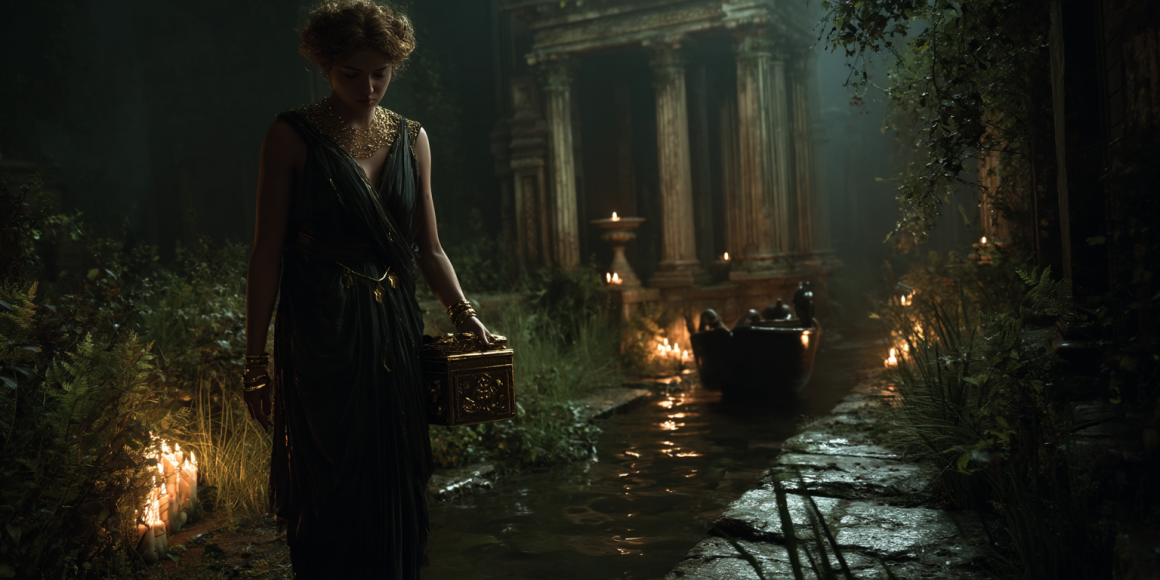
Psyche: Love’s Ordeal
Psyche, a mortal woman of such beauty that she angered Venus, became the wife of Cupid—but only under strange conditions. Venus never permitted her to gaze upon him. When she disobeyed, Cupid fled, and Psyche was given impossible tasks to win him back.
The final task: descend into the underworld and retrieve a box of beauty from Proserpina.
Terrified, Psyche prepares for her journey. A talking tower gives her instructions: bring two coins for Charon, two barley cakes for Cerberus, resist speaking to the dead, and above all, do not open the box.
She follows the instructions perfectly—until the return. Curiosity overcomes her. She opens the box.
He plunges into a slumber that resembles death.
Cupid, now recovered, rescues her. Psyche is awakened and made immortal. Her trials, especially her descent, have proven her worthy.
The underworld is a place of death and temptation, especially the urge to learn more and seize power too soon. Psyche’s journey is the soul’s journey: perilous, full of beauty, and only survivable with help—and love.
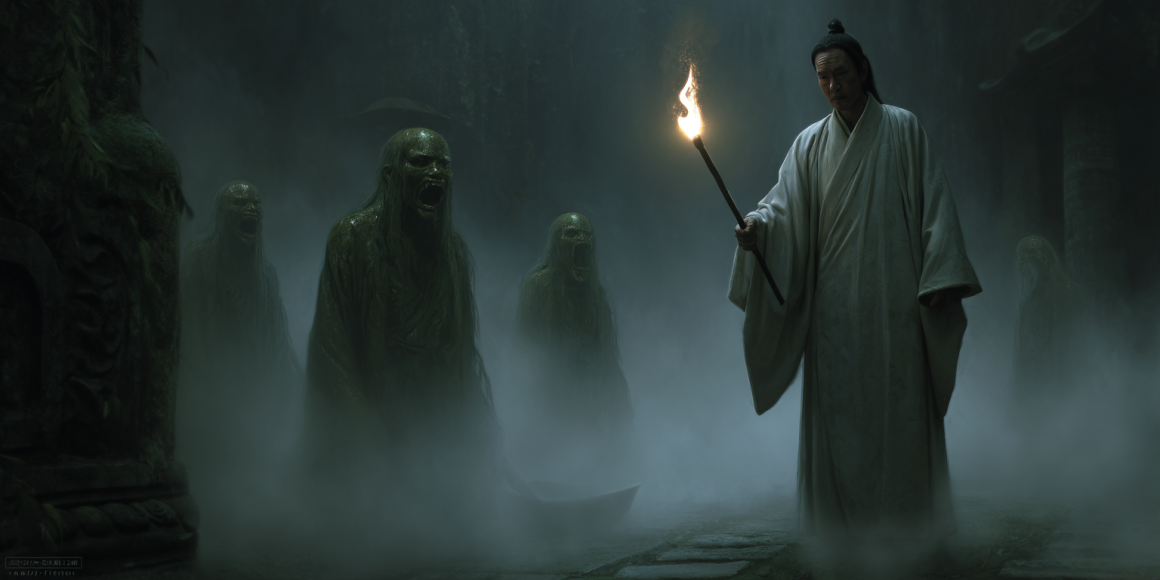
Izanagi and the Shadows of Regret
In Japanese mythology, the god Izanagi and his sister-wife Izanami created the islands of Japan. But when Izanami died giving birth to the fire god, she descended to Yomi, the land of the dead.
Izanagi, grieving, followed her.
At first, she speaks from the shadows and asks him not to look at her. She will plead for release, but he must be patient.
But like Orpheus, Izanagi disobeys. He lights a fire—and sees her decomposing form, crawling with maggots and filth.
She is no longer the woman he loved.
Horrified, he flees. Izanami, now enraged, sends death spirits after him. He barely escapes, sealing the entrance to Yomi with a massive boulder.
Before returning to the land of the living, Izanagi purifies himself. In his ritual cleansing are born new gods, including Amaterasu, the sun goddess.
This descent is one of grief and purification. Izanagi cannot undo death. He can only cleanse himself and begin anew. The lesson here is stark: some doors, once opened, cannot be closed. But in despair, new light may come.
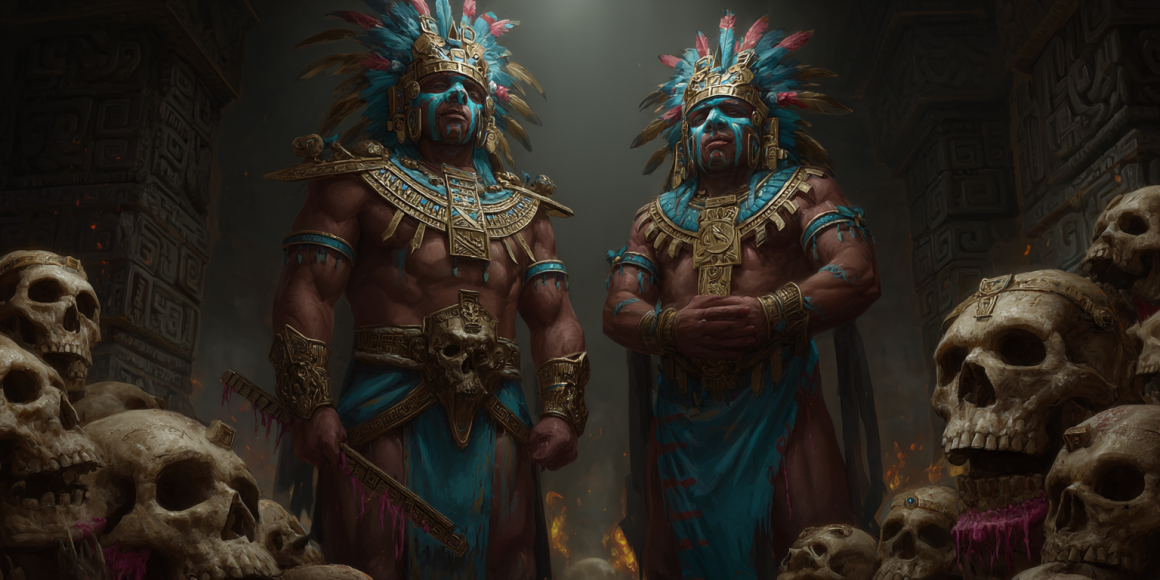
The Hero Twins of the Maya: Trials in Xibalba
The Mayan Popol Vuh tells of the Hero Twins, Hunahpu and Xbalanque, who descend into Xibalba, the underworld of the K’iche’ Maya. Their father and uncle had died there, defeated by the lords of death. Now, the twins return—not just to retrieve the past, but to outwit the death gods themselves.
Xibalba is not just darkness—it is a place of trials. The twins face deadly ball games, houses filled with razor blades, freezing cold, and howling bats. Through cunning and cooperation, they survive.
In the end, they allow themselves to be killed—only to rise again, transformed. They trick the lords of Xibalba into their demise and ascend to the heavens as sun and moon.
This is a myth not only of descent but also of victory. The twins do not just survive—they overcome. They bring cosmic balance by confronting death on its ground.
The underworld is a forge—and in this myth, it forges light itself.
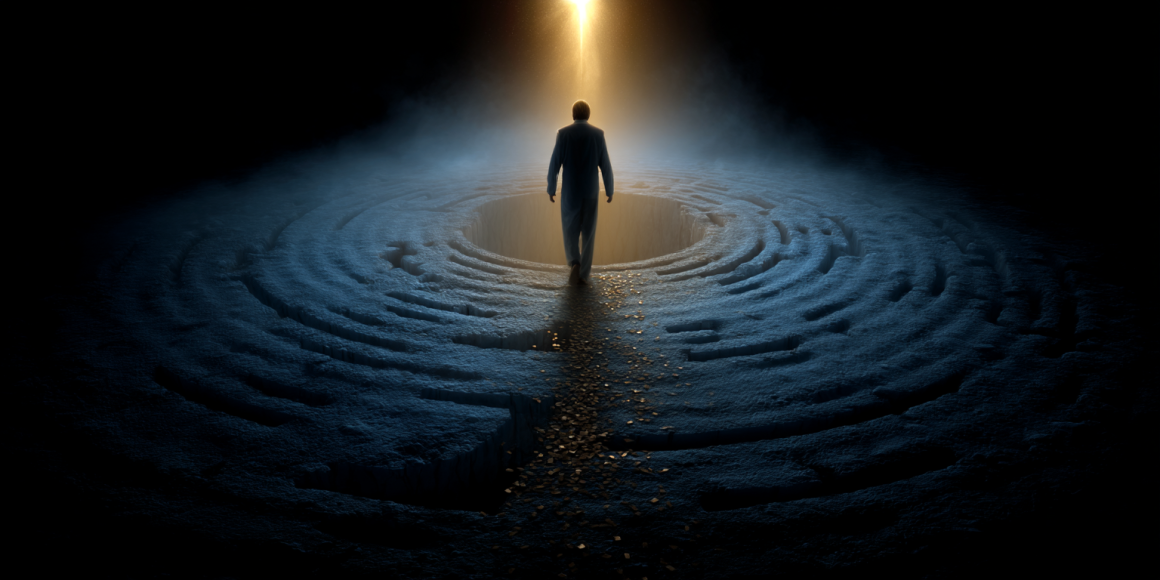
Descent as Archetype: The Mythic Pattern
Across cultures, descent myths share common elements:
- A descent into the unknown or forbidden.
- Loss or stripping away of identity or power.
- Encounter with death, shadow, or an underworld deity.
- A return—often with knowledge, transformation, or new life.
Carl Jung called this the journey into the shadow—the confrontation with the repressed parts of ourselves. Joseph Campbell labeled it part of the Hero’s Journey: the Abyss, followed by Rebirth.
Psychologically, spiritually, and even socially, descent myths reflect transformation through trial. You cannot ascend until you’ve gone down. You cannot become whole until you’ve been broken and rebuilt.
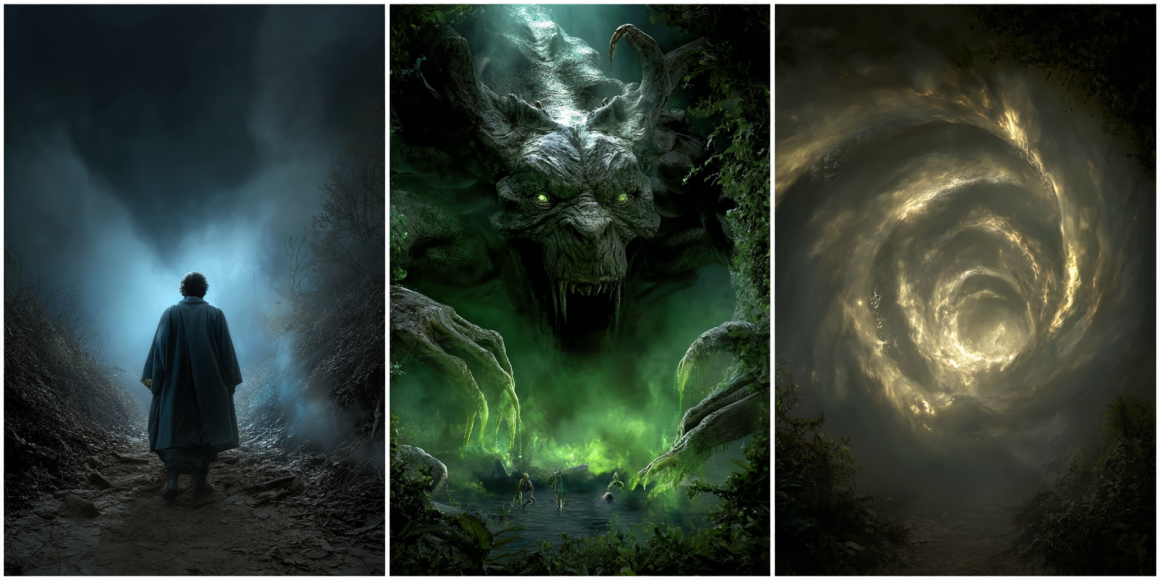
Modern Echoes: Descent Today
The journey into the underworld is not just myth. It lives in our stories still.
- In Dante’s Inferno, the poet descends through nine circles of Hell to understand sin and salvation.
- In The Empire Strikes Back, Luke Skywalker faces his fear in the cave of Dagobah—and sees his face behind Darth Vader’s mask.
- In Stranger Things, children descend into the Upside Down to retrieve a lost friend—and return changed.
- In therapy, individuals descend into the painful depths of memory and emotion to reclaim lost parts of themselves.
We descend every time we grieve. Every time we’re broken by loss or crisis. We venture into the uncharted territory of our own being.
Every time we return—if we do return—we undergo a transformation.
Descent and the Feminine
Many descent myths are feminine. Inanna. Persephone. Psyche. They reflect not conquest but transformation through surrender, suffering, and emergence. The feminine descent is not about defeating the underworld—it is about absorbing its truth.
These stories teach a different kind of strength. The strength in these stories lies not in the hero’s blade but in the goddess’s silence. It is not about the triumph of control but about the wisdom of endurance. These myths tell us you will be stripped bare. And you will still be enough.
Why We Need Descent
Why do cultures across millennia tell these stories?
Because transformation is terrifying.
Because we need to know that the dark night of the soul is not the end.
Because we need maps—myths—to guide us when life unravels.
Descent myths are not about death. They’re about becoming. They serve as a reminder that both light and shadow shape us. That wisdom is often born of loss. Every conclusion could serve as a turning point.
And so, we descend—not to die, but to rise again.
References
- Black, J.A., & Green, A. (1992). Gods, Demons and Symbols of Ancient Mesopotamia. University of Texas Press.
- Kramer, S.N. (1961). History Begins at Sumer. University of Pennsylvania Press.
- Ovid. Metamorphoses. Trans. A.D. Melville. Oxford World’s Classics.
- Apollodorus. The Library of Greek Mythology. Trans. Robin Hard. Oxford University Press.
- Eliade, Mircea. (1959). The Sacred and the Profane: The Nature of Religion. Harcourt.
- Campbell, Joseph. (1949). The Hero with a Thousand Faces. Pantheon Books.
- Tedlock, Dennis. (1996). Popol Vuh: The Mayan Book of the Dawn of Life. Simon & Schuster.
- Leeming, David. (1998). Mythology: The Voyage of the Hero. Oxford University Press.
- Jung, Carl. (1959). Archetypes and the Collective Unconscious. Princeton University Press.

